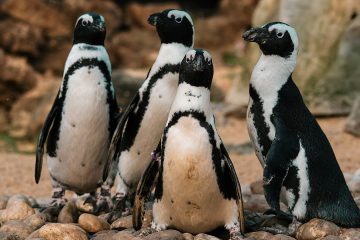Exploring the Magnificent Jaguar: Facts and Conservation
Introduction
The jaguar (Panthera onca) is not only revered as the largest big cat in the Americas, but it also plays a critical role in its ecosystem. Known for its strength, agility, and beautiful spotted coat, this apex predator is essential to maintaining the balance of its habitat. However, current conservation efforts are necessary to ensure that this magnificent species does not become endangered.
Physical Characteristics and Habitat
Jaguars are recognized for their powerful physique; they are built for strength with a robust body, short legs, and a broad head. Adults typically weigh between 50 to 100 kg (110 to 220 lbs) and can grow to around 1.5 to 2.4 meters (5 to 8 feet) in length. Their distinctive features include a yellow-orange coat with black rosettes that aid in camouflage among the dense foliage of their rainforest habitat.
Jaguars primarily inhabit tropical rainforests but are also found in savannas, scrublands, and wetlands across their range, which extends from southern United States to northern Argentina. They are solitary animals, preferring to hunt and roam alone, thus limiting interactions with one another outside of mating season.
Behavior and Diet
As formidable hunters, jaguars have a varied diet that can include deer, capybaras, and other terrestrial animals. They are known for their unique hunting technique, where they employ powerful jaws capable of crushing skulls or shells. Their behaviour primarily revolves around their need to find food, with a strong emphasis on maintaining a territory that can provide enough sustenance.
Conservation Status and Threats
Although jaguars were once widespread, today they are classified as Near Threatened by the International Union for Conservation of Nature (IUCN). Deforestation, habitat fragmentation, and illegal hunting pose significant risks to their survival. The expansion of agricultural lands also threatens their habitats, leading to conflict with humans as they may prey on livestock.
Various conservation initiatives are underway to protect these remarkable creatures. Organizations are working on habitat protection, promoting sustainable land-use practices, and educating local communities about the ecological benefits of preserving jaguar populations.
Conclusion
The jaguar is a vital component of the ecosystems in which it resides, serving as a keystone species. Protecting this majestic creature not only preserves biodiversity but also contributes to the health of the entire environment. As awareness grows and conservation efforts continue, there is hope that the jaguar’s future can be secured, ensuring that future generations can appreciate these stunning animals in their natural habitat.








